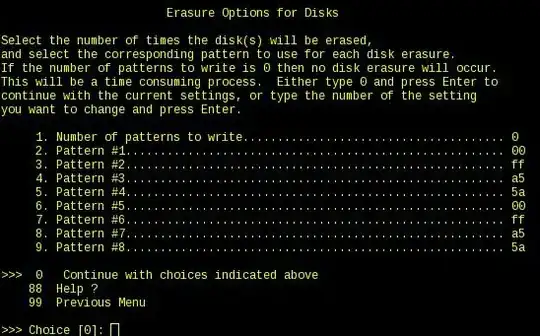
When installing a new AIX server, there is a possibility to use several patterns for secure deletion.
My question: Is it necessary to use several patterns? What is the benefit from having several ones?

When installing a new AIX server, there is a possibility to use several patterns for secure deletion.
My question: Is it necessary to use several patterns? What is the benefit from having several ones?
No, it isn't necessary.
With modern (less than 10 year old) hard drives, it is not required to overwrite a disk more than once.
There is an often cited paper which says that you need to overwrite data at least 10 times to be sure, but that paper is over 20 years old and thus applies to outdated hard drives. Modern hard drives use much weaker magnetic fields and much more sensitive read-heads to reach higher data densities. As a result their data is a lot less persistent.
This has been proven in the paper "Overwriting Hard Drive Data: The Great Wiping Controversy" by Craig Wright and Dave Kleiman from 2008.
You might wonder: "Then why is there still software which offers to overwrite hard disks dozens of times with all kinds of sophisticated patterns?" The answer is that people are paranoid when it comes to security. When they heard somewhere that a hard drive can be restored after a single pass, even when the source is dubious, they won't trust a software product which doesn't do it. Also, there are some outdated standards for IT security around which still have that myth and which must be followed by some organizations, even when they know that it's snake oil.
They are necessary, using several patterns is needed to ensure secure deletion.
When doing secure deletion of a disk (and we are not toking about SSD here), you must ensure that your bits changes their position several times so that it is impossible even with finest hardware to guess what has been stored before the current information (residual magnetic fields).
That is the same mechanism "secure deletion utilities" work, but they usually use several passes with random data.